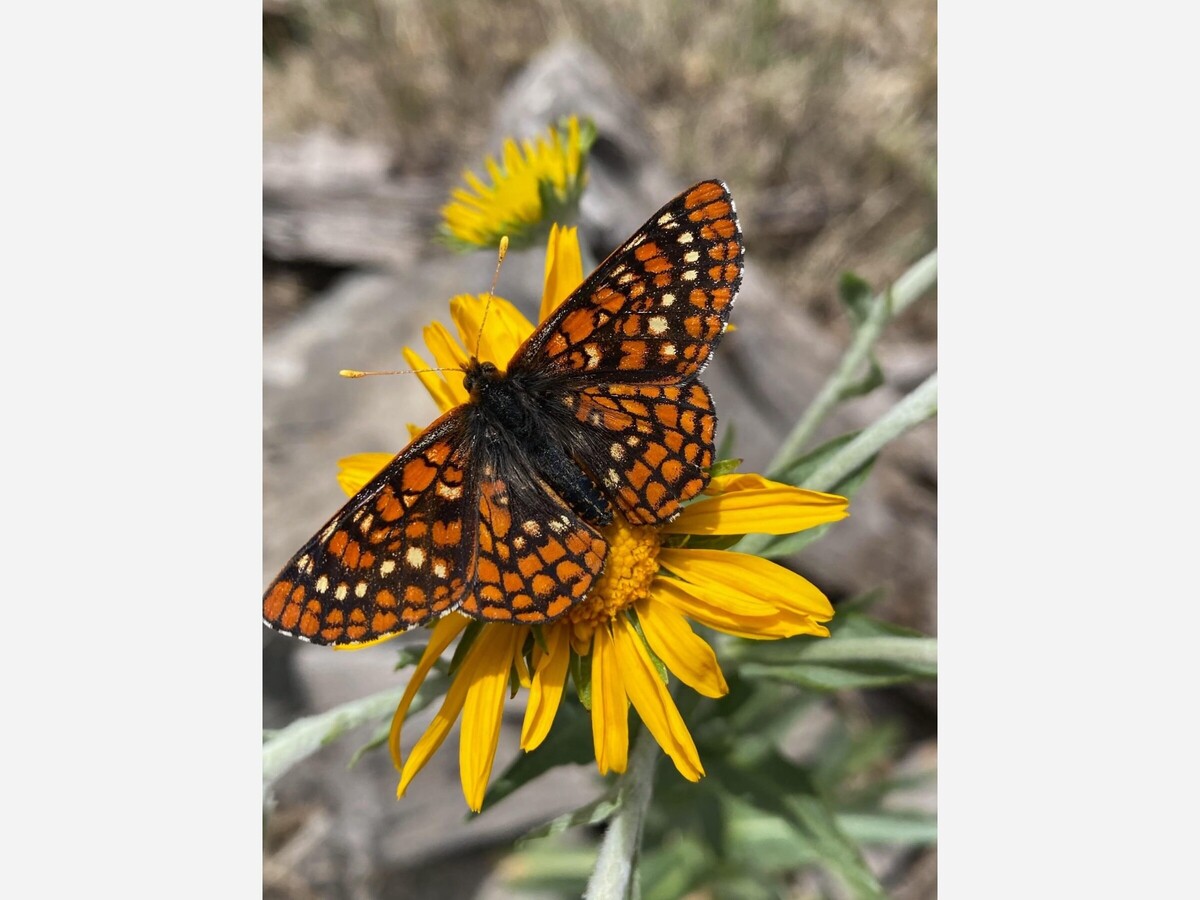Image


Cloudcroft, New Mexico's, Richard Welch was in Alamogordo, teaching the public and advocating at the Alameda Park Zoo, for Earth Day 2024, events this weekend. He was on location, handing out flyers, and advocating for the Sacramento Mountains Checkerspot Butterfly. He volunteered his time Saturday, for Earth Day 2024, to educate the public, on a local endangered species. His actions pay a tribute to the earth, and species protection, honoring the very intention of Earth Day in Otero County, New Mexico.
The Sacramento Mountains Checkerspot Butterfly is a local endangered species that lives amongst us in the Sacramento Mountains. This species of butterfly is specific to the Sacramento Mountains, as this is the ONLY PLACE in the world this butterfly exists, here and locally.
Here are some facts, shared by Mr. Welch enlightening us, on the Endangered Species Status for Sacramento Mountains Checkerspot Butterfly
The Facts:
The Sacramento Mountains Checkerspot Butterfly is only located in the Sacramento Mountains. Its native lands where it lives is a small section of the earth less than about 40 square miles of radius near the Lincoln National Forest. Degree of Threat: Very high - high.
To clear up any misconceptions here are the facts related to registration as an endangered species. Their presence as a listed species under the endangered species act does not affect land ownership, establish any restrictions on use of or access to the designated areas, establish specific land management standards or prescriptions, or prevent access to any land. Therefore, the Act does not violate the 5th Amendment as private property is not being taken for public use. Additionally, the presence of a listed species does not allow the Federal Government or public to access private lands.
Some exclosures have been erected on the Lincoln National Forest and are there and meant to prevent any large ungulate or grazer from feeding on butterfly host plants and nectar sources.
At natural population levels and normal environmental conditions, elk do not pose a significant threat to the Sacramento Mountains checkerspot butterfly or its habitat.
Ferrell horses were inadvertently released from the Mescalero Apache Reservation and dispersed onto the Lincoln National Forest around 2012. Horses are not native to the Sacramento Mountains and can add a significant browse pressure to meadow lands and may be a threat.
What can we do to help this endangered species?
Learn about them, advocate for them and be aware that the meadows are where the Checkerspot Butterfly feeds and lays their larva. Tread lightly and limit use of motorized vehicles in the meadows and their natural habitat.
Respect the exclosures the United States Forest Service has erected. Together we can do our part in trying to save this endangered species.
Per the U.S. Fish and Wildlife Service, “we are listing the Sacramento Mountains checkerspot butterfly (Euphydryas anicia cloudcrofti), a butterfly from New Mexico, as an endangered species under the Endangered Species Act of 1973 (Act), as amended. This rule extends the Act's protections to the Sacramento Mountains checkerspot butterfly. We will propose the designation of critical habitat for the Sacramento Mountains checkerspot butterfly in a future rulemaking.”
A Life Short Lived in Beauty:
As a Sacramento Mountains Checkerspot Butterfly emerges as a caterpillar, about the length of a paper clip it sways its black and bristly body back and forth. It reaches toward the light and begins life.
Sacramento Mountains Checkerspot Butterflies as they transition are picky about where they live, requiring bright, moist, requiring bright, moist, open wildflower meadows near the shade of a forest, the Lincoln National Forest to be exact.
The beauty they share with us on earth is brief after spending six months in a hibernation like state known as diapause, the caterpillars rouse in late January through March and are busy bulking up for a beautiful transformation. They will continue to eat and grow through mid-March to late April, after which they’ll pupate beneath dry wood and vegetation and undergo metamorphosis. Their chrysalises, with cream-and-grey bands alternating with orange and black dots, offer a pastel preview of the butterfly to come.
Only a few chrysalises have been found in the wild. In April or May, they emerge as adults and take to the air on wings of vivid red or orange and white, outlined in black, calling to mind the brightly hued geometry of stained-glass windows. Their life as butterflies is fleetingly short of just one to 14 days. These beautiful butterflies use their limited time to dazzle us and more importantly to mate and lay clusters of approximately 100 bright yellow, quinoa-sized eggs that take on a maroon hue before hatching. A single butterfly can lay up to 1,000 eggs. From those eggs, new caterpillars will appear, fatten up, enter diapause in June or July, and then awaken in January or February to, hopefully, continue the cycle in the wild.
The life of this beautiful species is at risk, but with advocates such as local activist Richard Welch, and a host of others, this species stands a chance of survival for yet another day. Happy Earth Day 2024 Otero County.